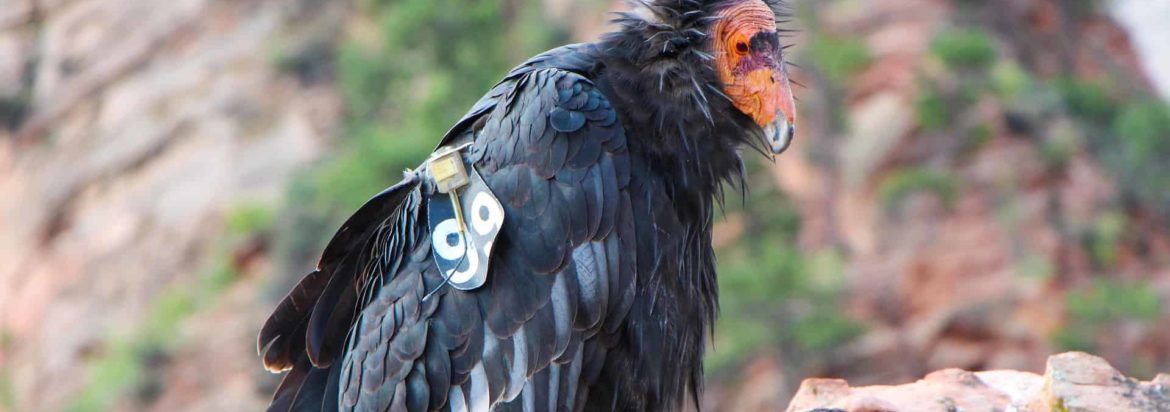My mate and I ride a thermal along the rim of Grand Canyon National Park. Although I have the reputation of being “a tough old bird,” I melt as I take in her curved beak, nearly 10-foot wing span, and impressive featherless face. Humans rarely use the word “beautiful” when it comes to describing scavengers like us, but they’re impressed when they watch us in flight and learn that we’re “living fossils” since we date back to the Ice Age.
Movement below draws my attention. Hoping that coyotes are hunting rabbits, I’m disappointed to see that it’s only a ranger and tourists. Healthy, alive tourists. My crop will remain empty a while longer.
Perhaps it’s because we’re so scarce that the tourists seem excited to see us. I have to give the humans credit. After they realized there were only 22 of us still alive, they put us on the endangered species list and the California Condor Recovery Program took action.
I’m a descendent from one of the six young condors released near the Grand Canyon in 1996. My ancestors lost food sources and nesting sites because of the construction of huge apartment complexes and stores. Other relatives fell victim to carcasses laced with poison. People had wanted to get rid of grizzly bears. But guess what? They also killed scavengers like us condors. Lead poisoning from bullets also contributed to many deaths. And then there was the foolish use of DDT which made bird eggs so fragile they’d break before the chicks could hatch. Not even tough old birds like us condors could overcome that.
One woman tourist appearing to be in her 60’s is especially excited to see us. She has binoculars and can probably see my transponder and the identification numbers on my wings.
She can look me up and know that my mate and I nest near Hopi Point at Grand Canyon. She’ll find out that we lost one chick a few years back, but had an egg hatch in May.
Last March, after my mate found a place on a rock ledge, she laid one egg. We didn’t bother building a nest. I helped incubate the egg and 60 days later, we hatched a male chick. In six months it will hopefully fledge. We’ll need to watch over it for another 6 months. Since it takes more than a year to raise a chick, my mate only lays an egg every other year. Hopefully our bald-headed youngster will survive and live a long life, up to 60 years.
I’m nervous to think that in November our chick will drop over the edge and test out his wings. It’s a long fall if he doesn’t figure out what to do. I guess I’ll just have to have faith that my son, a California condor, will be like my mate and me. A tough old bird.


2 Replies to “Tough Old Bird”
Intriguing post! You have me worried about the chick now….
Yes, I worry about the chick, too. Will we ever stop mothering?